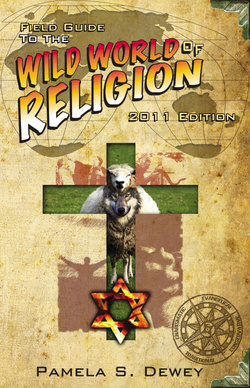Читать книгу Field Guide to the Wild World of Religion: 2011 Edition - Pamela J.D. Dewey - Страница 5
Simpler times, Limited Choices
ОглавлениеIf you were a teenage boy in 1957, your choices at the barbershop would have been very simple. If your dad was recently in the Armed Services, chances were pretty good he would insist the barber give you a very close-cropped “crew cut.” If it was sheared straight across the top, it would be called a “flat top.” The other cut acceptable to most parents would have been only slightly longer on top, parted on one side, and combed neatly over, perhaps with a dab of Brylcreem to keep it looking neat all day. It was the sort of haircut that nice, clean-cut young singer/actor Pat Boone would wear.
For the adventurous young man wanting to be different, there was one other choice—if he could get past his parents’ protests. He could let the hair grow much longer on top so that it would tousle down over his forehead, and much longer on the sides so he could slick them back with a comb to meet in the back of his head (giving a distinct resemblance to the back end of a duck … thus the term “D.A.”). He might well have used not just a dab of Brylcreem to finish the look, but a whole gob of something even gooier. (Thus the label that some put on such young men … “Greasers.”) And, if he could grow them, long sideburns would finish the look. It was the sort of haircut that scandalous young singer/actor Elvis Presley would wear.
If you wanted to watch TV in the evening, your choices were likewise simple and few. Your TV would likely have had only one rotating channel selection dial, which went from 2-12. And that didn’t even mean you actually had a choice any time in the evening to watch 11 different programs. Your actual choices at any given time were only three. For there were only three networks—NBC, ABC, and CBS.
If you were a sports fan, there might be a few times during the week when one of these networks would be showing a sporting event. If you were a science fiction fan, your choices might have been even slimmer, with only one or two sci-fi shows available. If you liked national and world news, you would have to wait for the one hour in the evening when each of the networks ran their regular newscasts. And, no matter what your desire for programming, in most areas you’d have to just go on to bed at midnight. Most TV stations closed down transmission at that time, returning to the air with programming early the next morning.
If you were born after the 1950s, you may be surprised to learn that there really were national televangelists back in those days. However, like everything else, your choices of these were also simple and few. There were three to pick from. For the Roman Catholic perspective, you could watch the weekly program of Bishop Fulton J. Sheen. To hear a basic Mainline Protestant version of the Gospel, you could tune in to the occasional televised Billy Graham crusade. And, if you were more adventurous, you could catch the weekly show of “healing evangelist” Oral Roberts, televised from one of his crusades in his huge travelling tent. If you were enthusiastic about Roberts’ show, there’s a good chance you were one of those who attended one of the little churches on the edge of your hometown.
